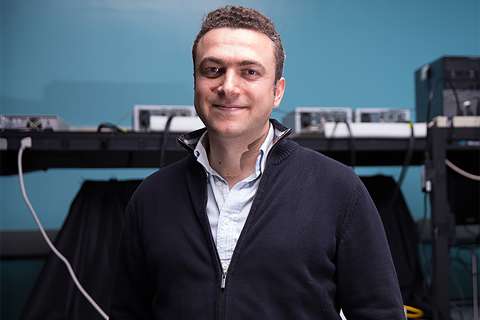Breasts come in various shapes and sizes. But not all women realize breasts can have different density, which refers to the types of tissue that make up your breasts.
“About 40% to 50% of women getting screened for breast cancer have dense breasts,” says Deanna Attai, MD, breast surgeon at UCLA Health and member of the UCLA Jonsson Comprehensive Cancer Center. “Knowing whether you have dense breasts is important because mammograms don’t perform quite as well with dense breasts, and you may need to take additional steps to screen for breast cancer.”
Here’s what you need to do to ensure you’re getting the most accurate breast cancer screening:
Understand what it means to have dense breast tissue
Your breasts contain two types of tissue: glandular tissue (the part of the breast that makes milk) and fatty tissue. Glandular tissue is more dense (thicker and heavier) than fatty tissue. If your tissue is more glandular than fatty, you have dense breasts.
“Density has nothing to do with breast weight, size or shape,” Dr. Attai says. “You can’t feel density. Breasts are naturally very lumpy and bumpy, but that has nothing to do with density.”
When it comes to screening for breast cancer, density makes a big difference. On a mammogram, dense tissue appears white when compared to fatty tissue. Abnormal growths, primarily cancers, also tend to be dense and white, so imaging of dense tissue doesn’t always show a possibly cancerous lump.
Find out your breast density level
The only way to know if you have dense breasts is through a mammogram report, delivered by your radiologist. Your report should also reveal your level of breast density:
- Level 1: Your breasts are all fatty tissue
- Level 2: You may have some dense breast tissue, but most of your tissue is fatty
- Level 3: Your breasts are called “heterogeneously dense” and have more dense tissue than fatty tissue
- Level 4: Your breasts are “extremely dense,” containing mostly dense tissue with very little fatty tissue
Make sure to check your breast density level after every mammogram. Your breast density can change as you age, especially after menopause when your breasts are no longer needed to make milk.
“We usually see higher breast density in younger women, who have a higher proportion of glandular tissue and less of the fatty tissue,” says Dr. Attai. “Most women’s breasts become less dense over time, unless you are on hormone replacement therapy which may cause your body to retain glandular tissue.”
Assess your risk factors for breast cancer
If your breast density is level 3 or 4, Dr. Attai recommends getting a breast cancer risk assessment to identify your overall risk for breast cancer.
“Having dense breasts is a risk factor for breast cancer but just one of many,” she says. “Not all women with dense breasts are at high risk for cancer, but your breast cancer risk will help to guide your screening plan.” Women at high risk for breast cancer may require screenings more frequently or with different imaging tools.
Choose 3D mammograms whenever possible
3D mammography, also known as digital breast tomosynthesis, uses low-dose X-rays and offers the best way to see cancer in dense breast tissue. Traditional (2D) mammography only produces pictures of the top and sides of the breast. A 3D mammogram captures images in three dimensions, or “slices,” of the breasts, making it easier to identify changes in breast tissue that cannot be seen with 2D images.
“If you’re of screening age (typically age 40 to 70), we recommend following the breast screening guidelines and screening with mammography,” Dr. Attai says. “In women with dense breasts, 3D mammography offers a better chance of finding cancer and a lower chance you’ll get called back for more imaging.”
Consider supplemental breast cancer screening
If you have dense breasts, your provider may talk to you about additional screening for breast cancer. Recommendations for the type and frequency of supplemental screening usually depend on your breast cancer risk.
“Dense breasts are a challenge, regardless of the type of imaging we use, but that’s why we sometimes use more than one type of imaging,” Dr. Attai says. “Each type of imaging looks at the breast differently. We put all of that information together to get a fuller picture.”
Imaging used for supplemental screening includes:
- Breast ultrasound, which uses sound waves to create images and serves primarily as supplemental imaging for women who are not at high risk for breast cancer
- Breast MRI (magnetic resonance imaging), for breast cancer screening in high-risk patients or when a mammogram does not provide enough information
- Fast Breast MRI (also called abbreviated MRI), which is not yet widely available and provides less-comprehensive MRI imaging in 15 minutes for women with dense breasts
If you have dense breasts and are not at high risk, Dr. Attai notes that supplemental screening is a personal decision that depends on your cost concerns and comfort level. Discuss your breast screening plan with your provider.
If you have concerns about your breast cancer risk or want to discuss your breast screening plan, speak to your primary care provider. If it’s time for your mammogram, schedule a screening mammogram online.



